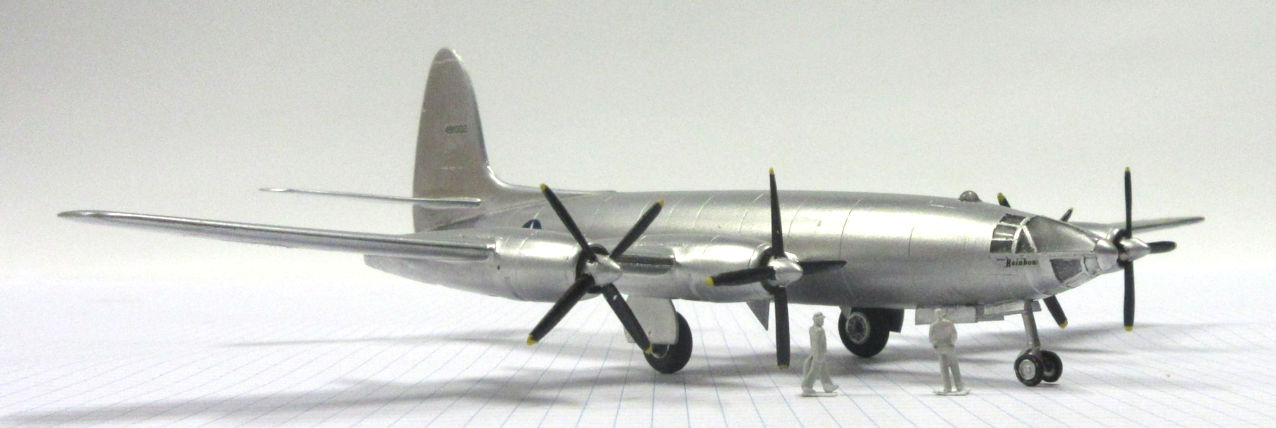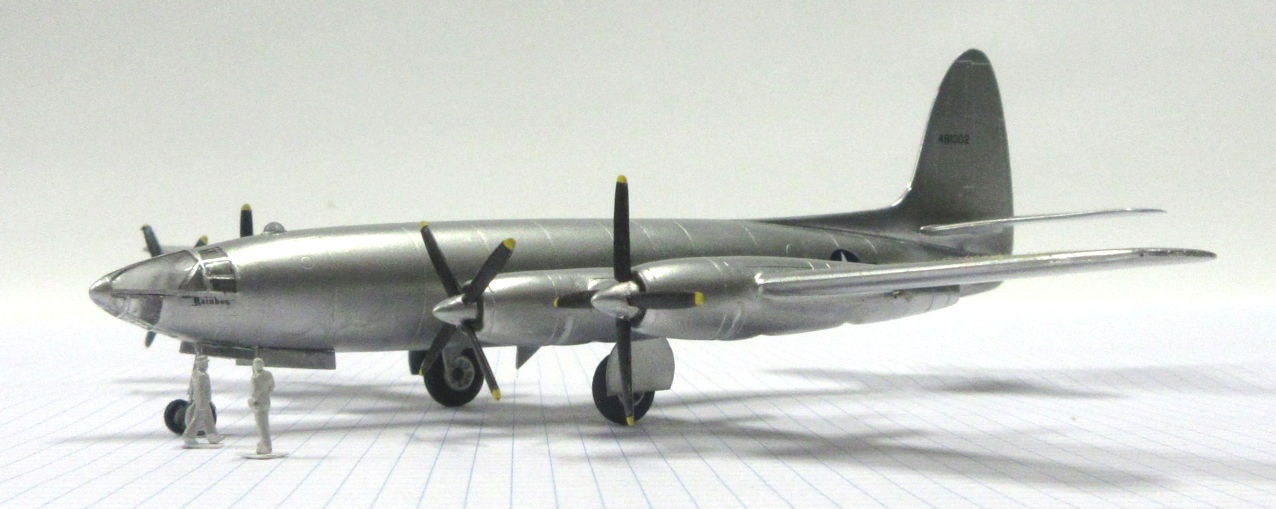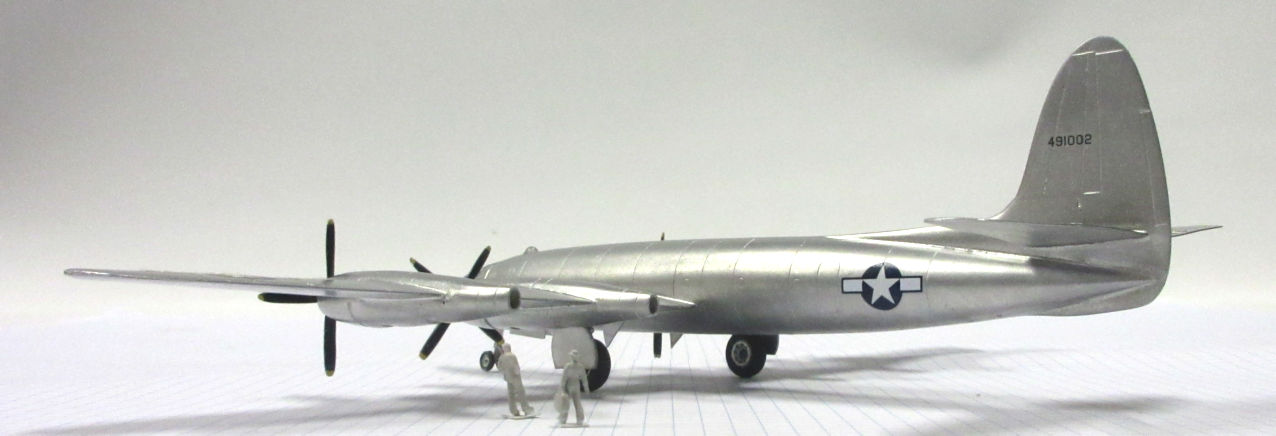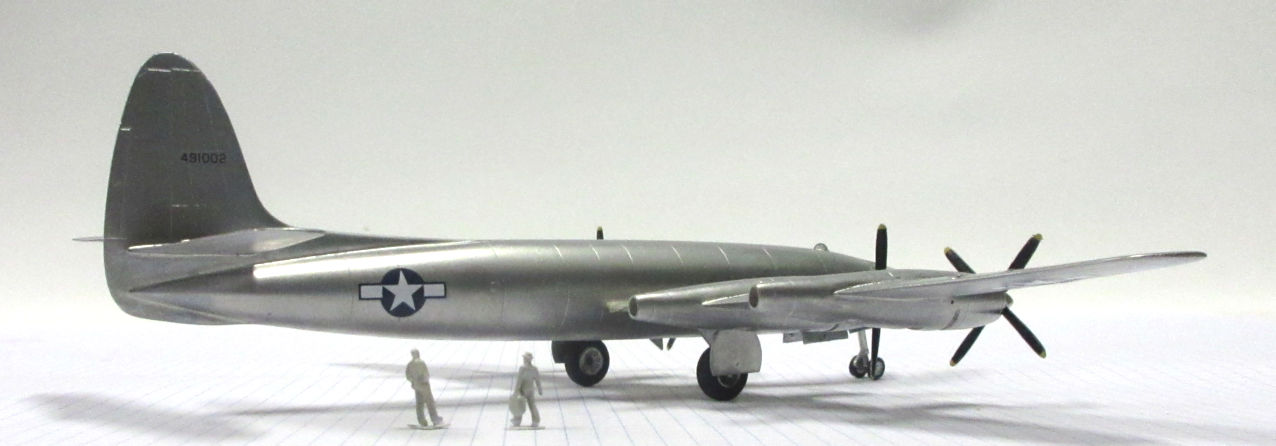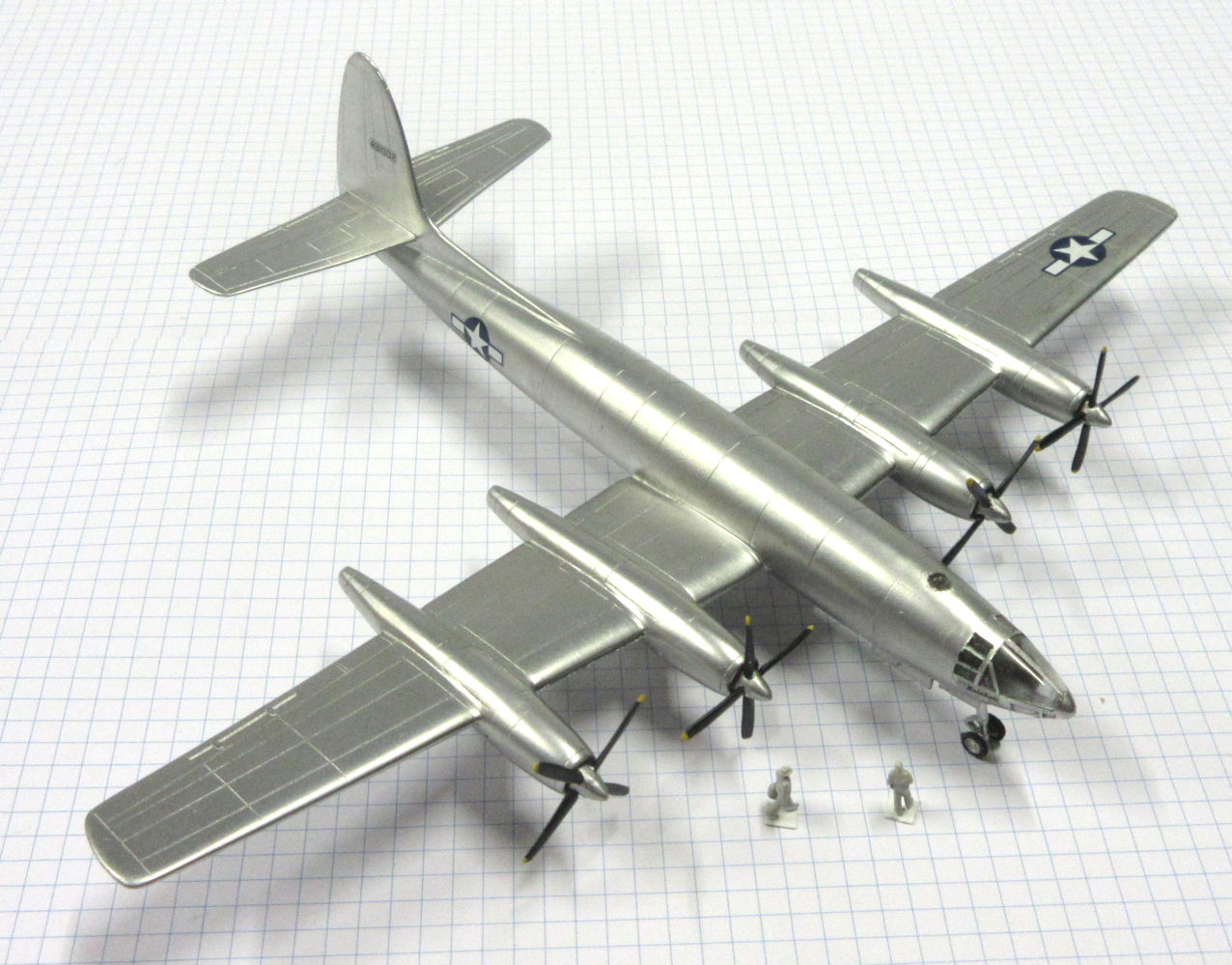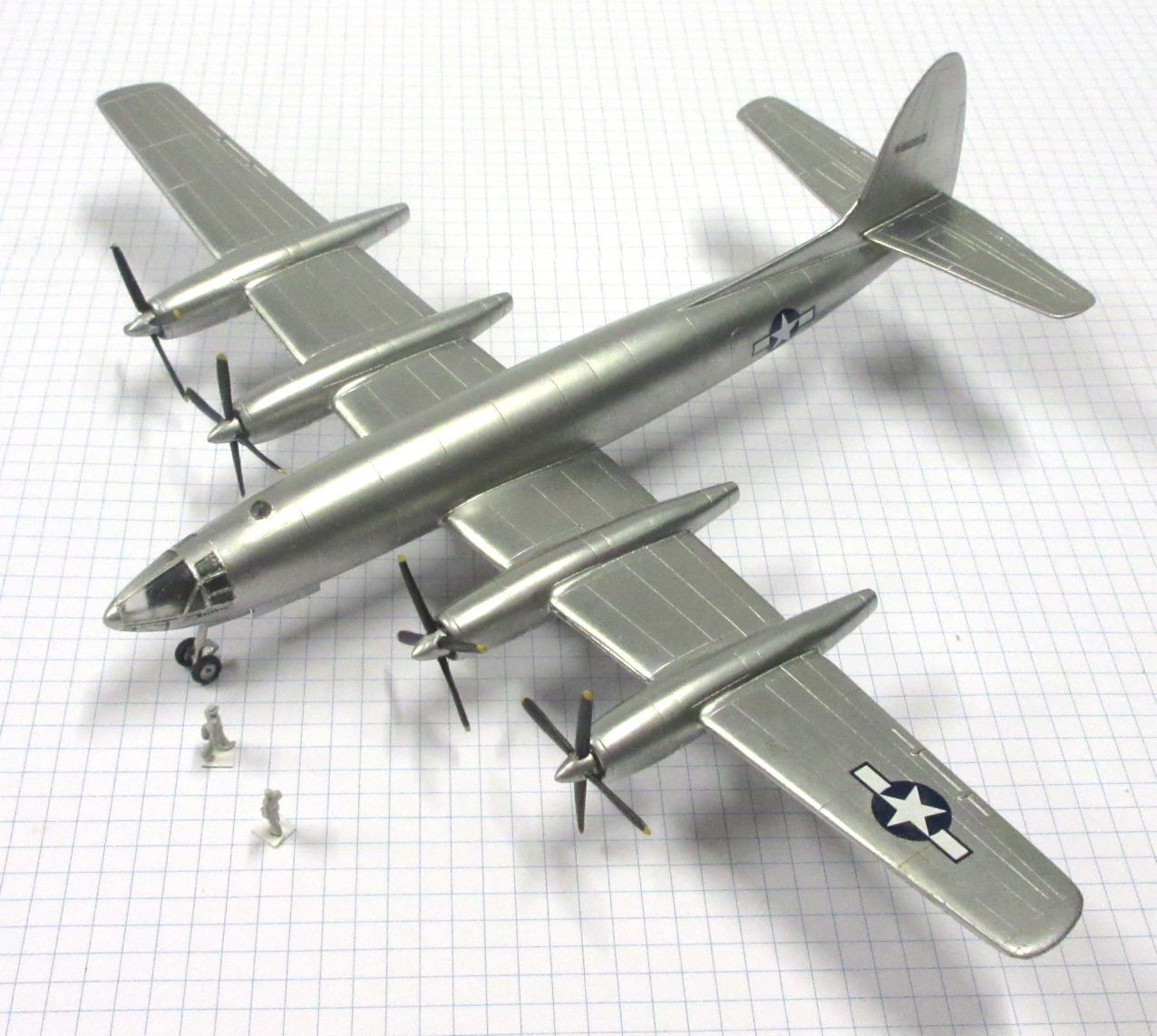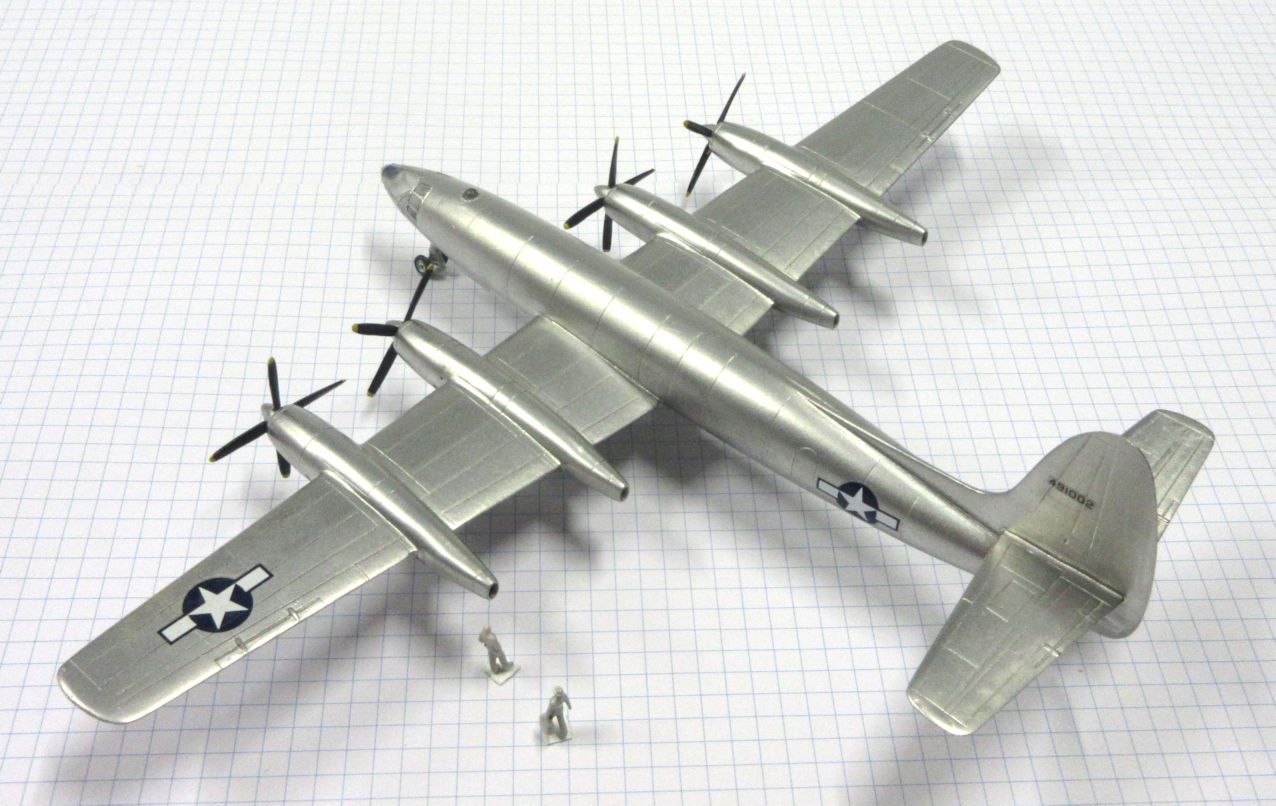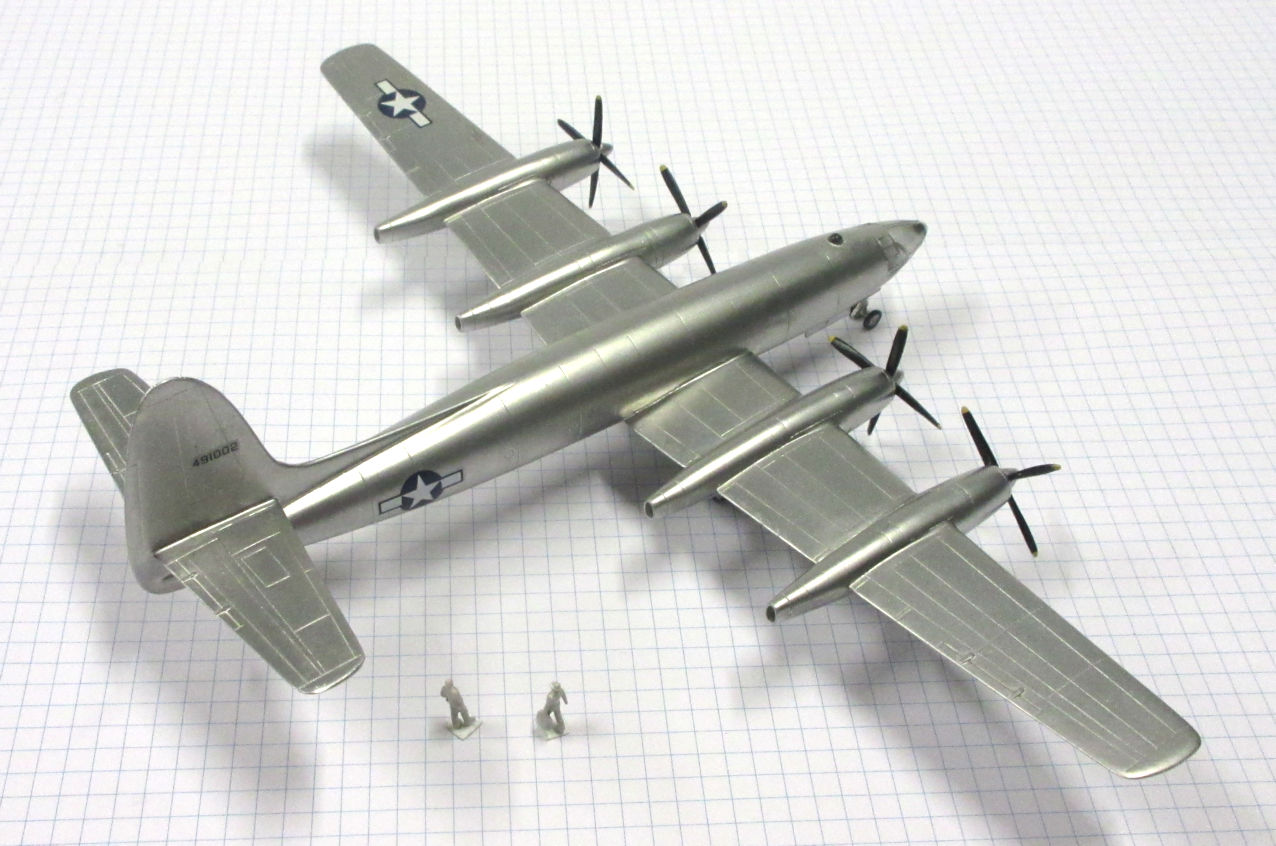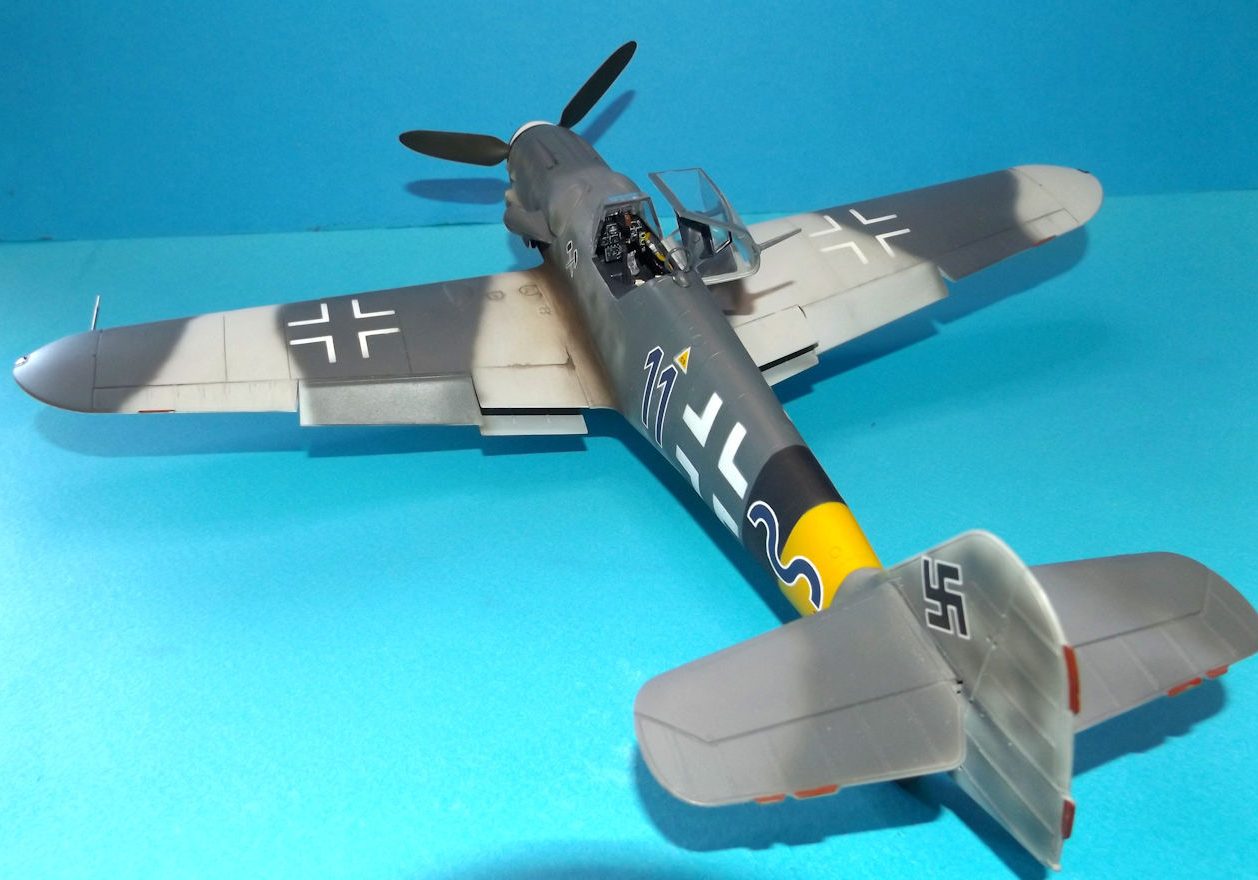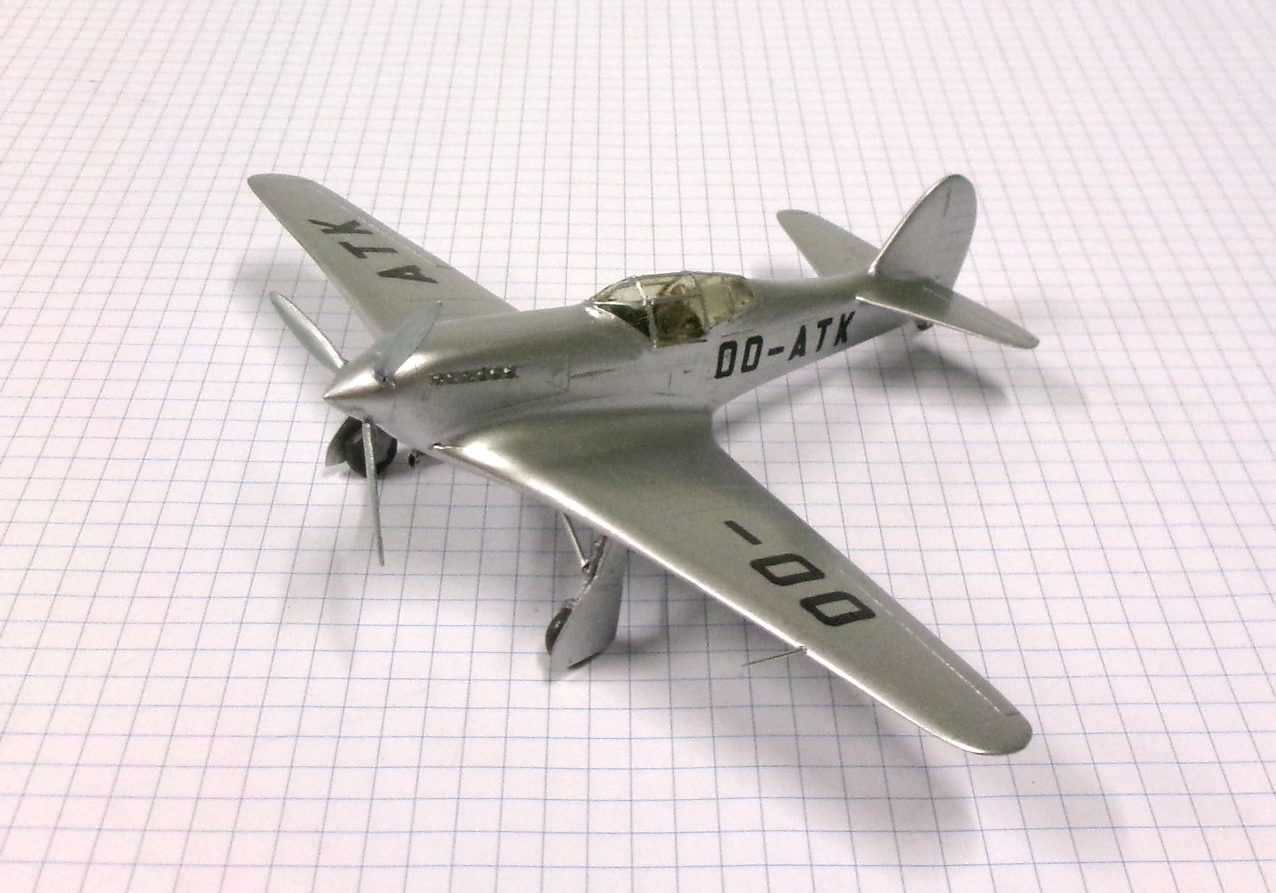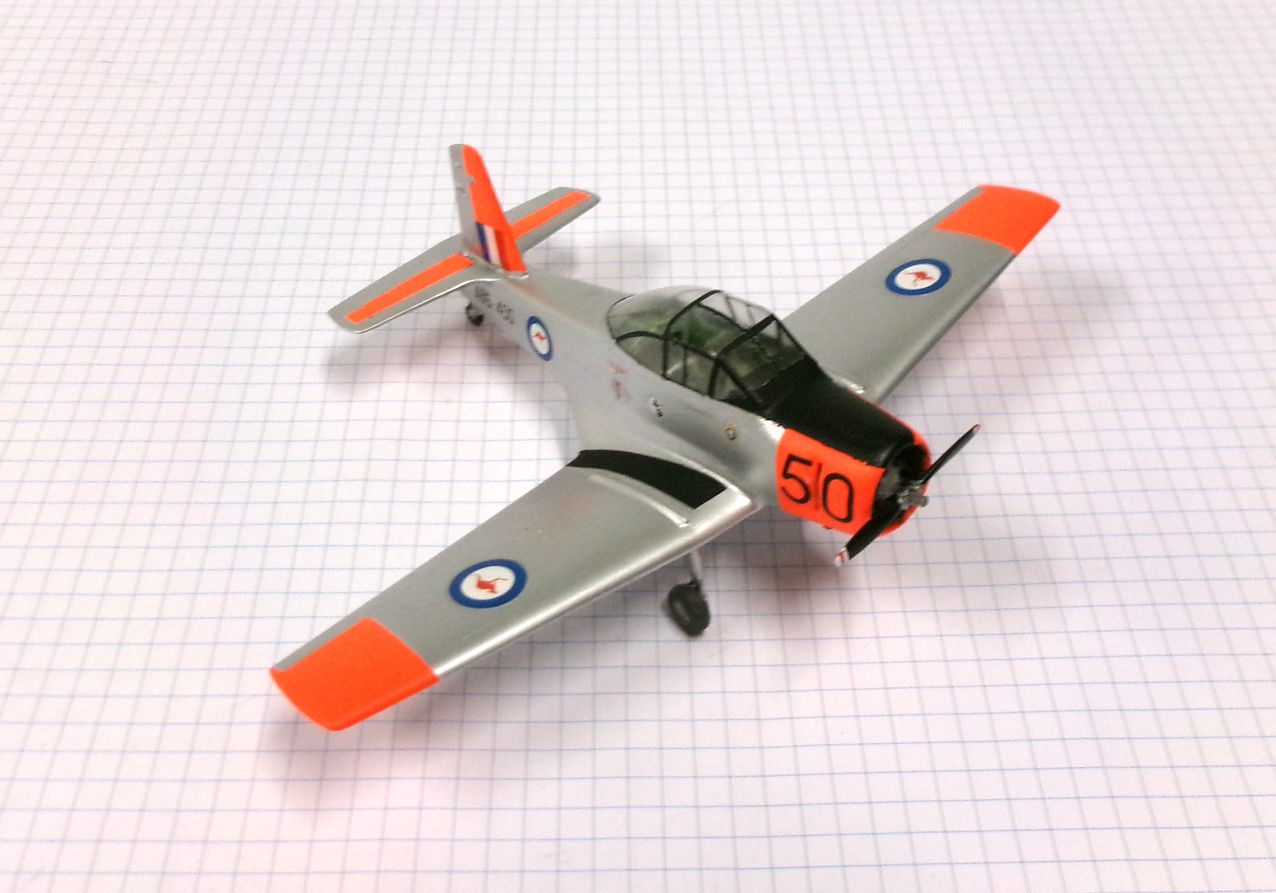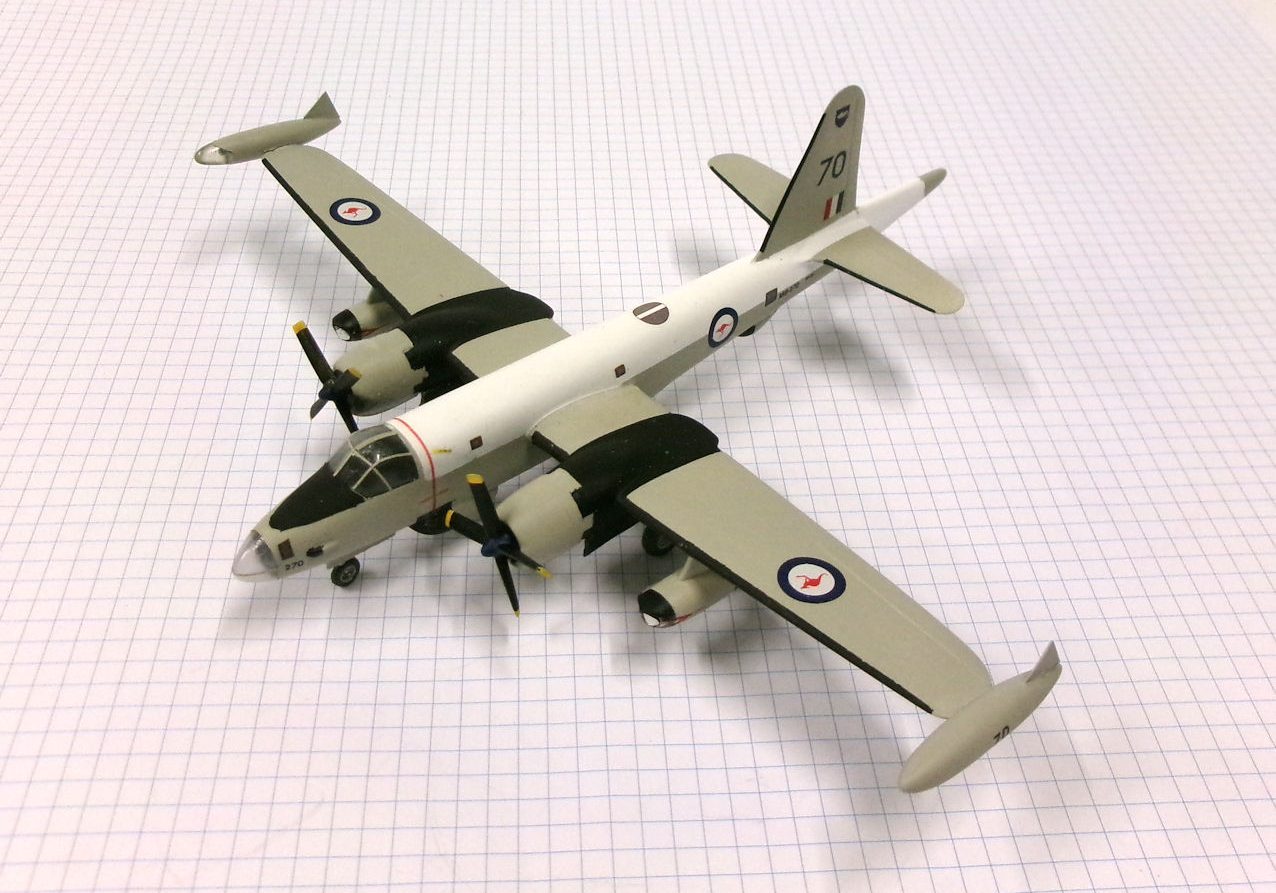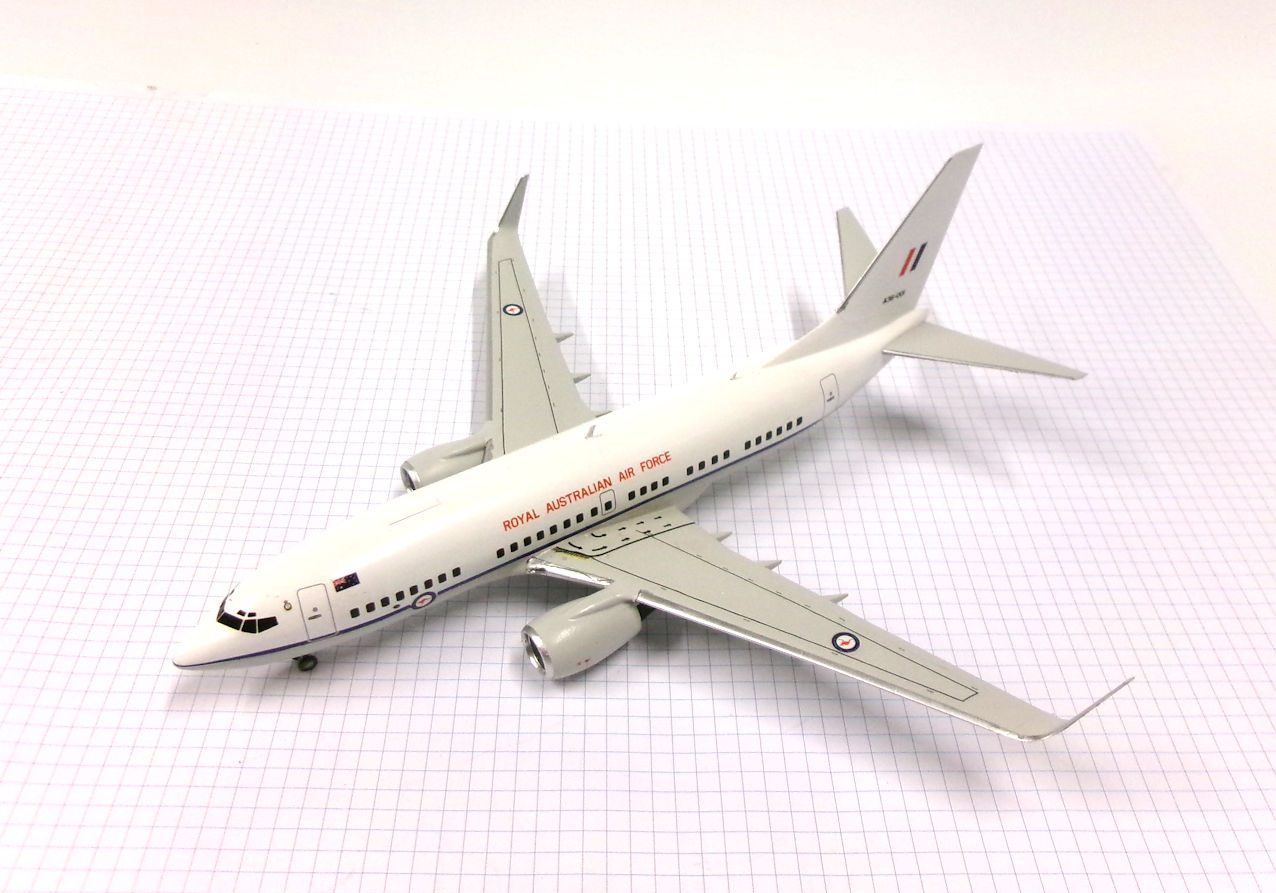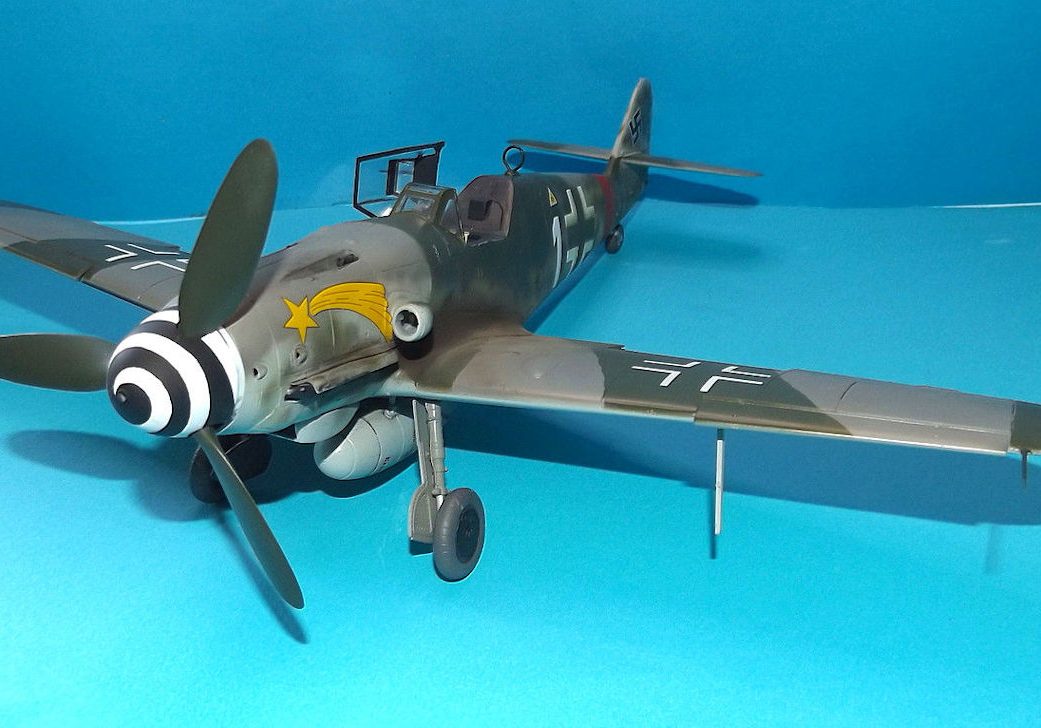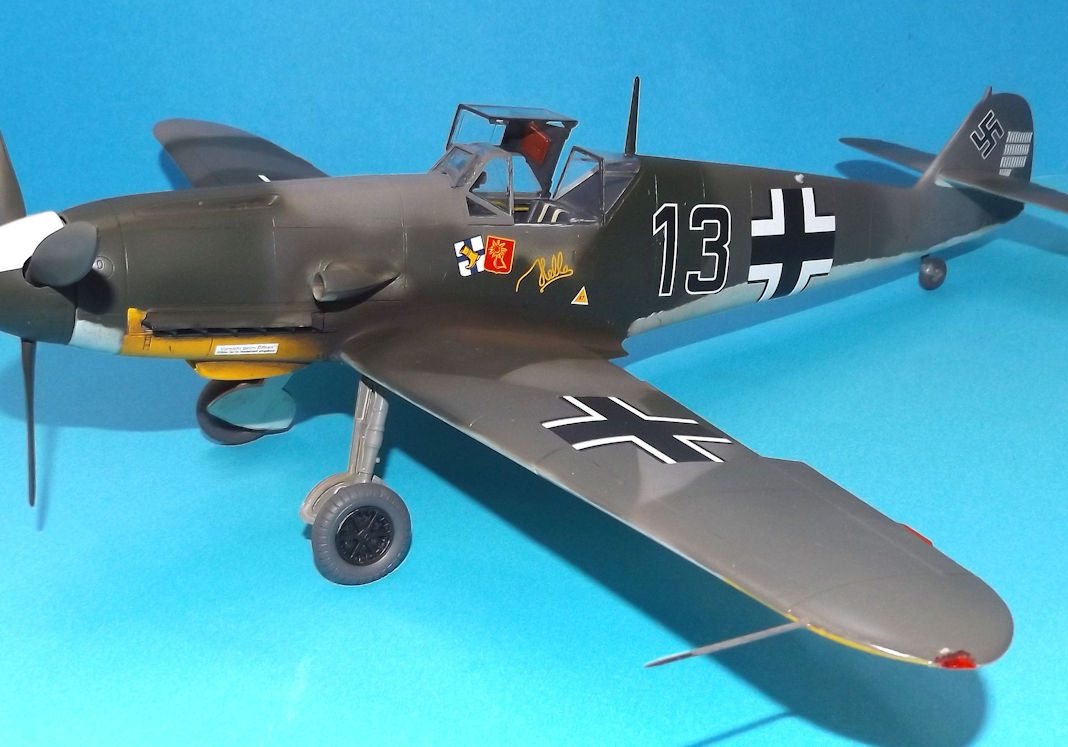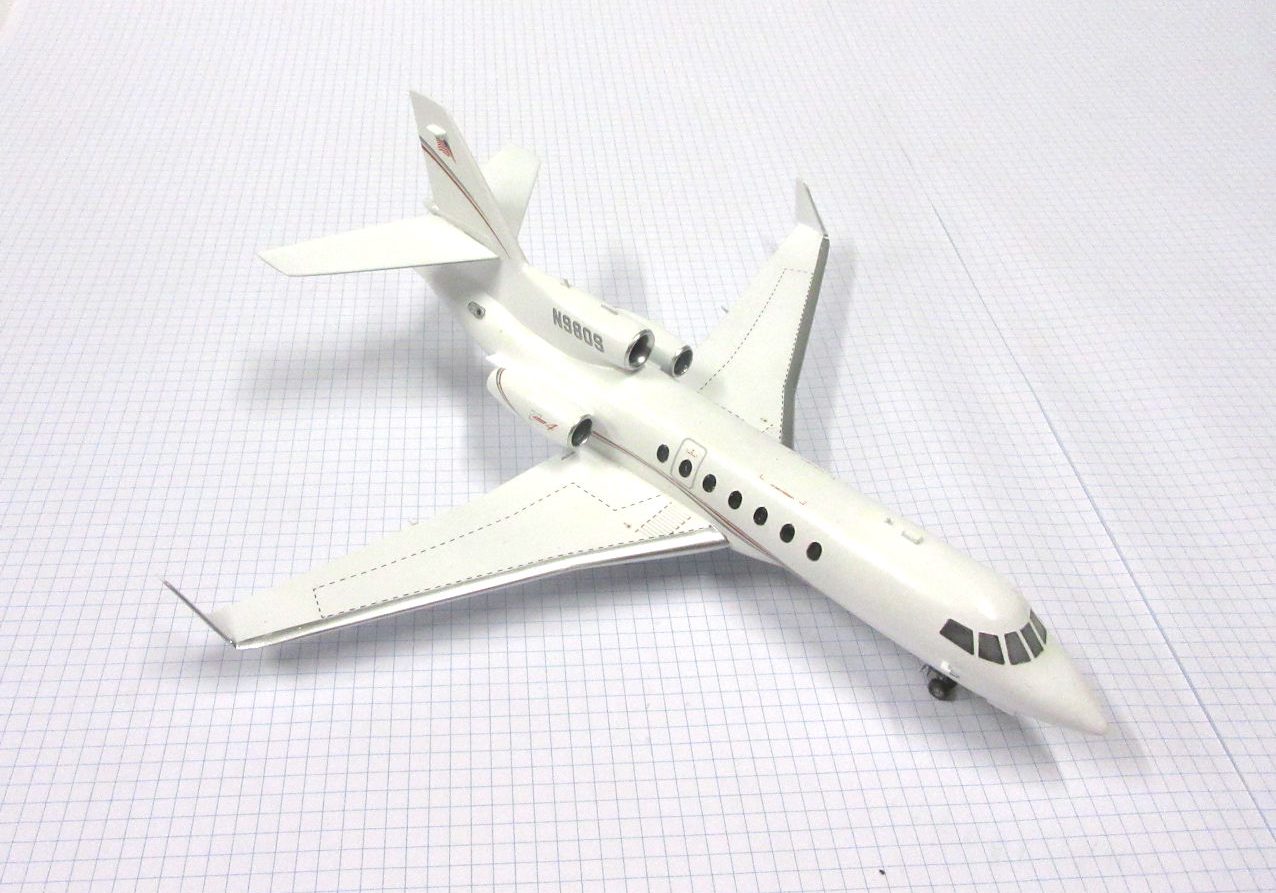History
The Republic XF-12 was a large long range photo-reconnaissance aircraft designed in the early 1940s for the Pacific War. Despite its high performance it was too late for the war and only two prototypes were produced.
Development of the XF-12 began in 1943 to give United States long range reconnaissance over the long distances of the Pacific War.
It was designed for the highest aerodynamic efficiency and to fly on ‘all fours’ – four engines at 400 mph cruise over 4000 miles at 40,000 feet altitude.
However the conversion of B-29s to perform long range photo-reconnaissance made the XF-12 unnecessary and the first one did not fly until 4 February 1946.
Two prototypes were constructed and test flown. The second prototype crashed in November 1948 and the first one was retired in June 1952.
This model represents the first prototype, c. 1947.
Anigrand 1/144 kit completed by Leigh Edmonds in May 2010.
